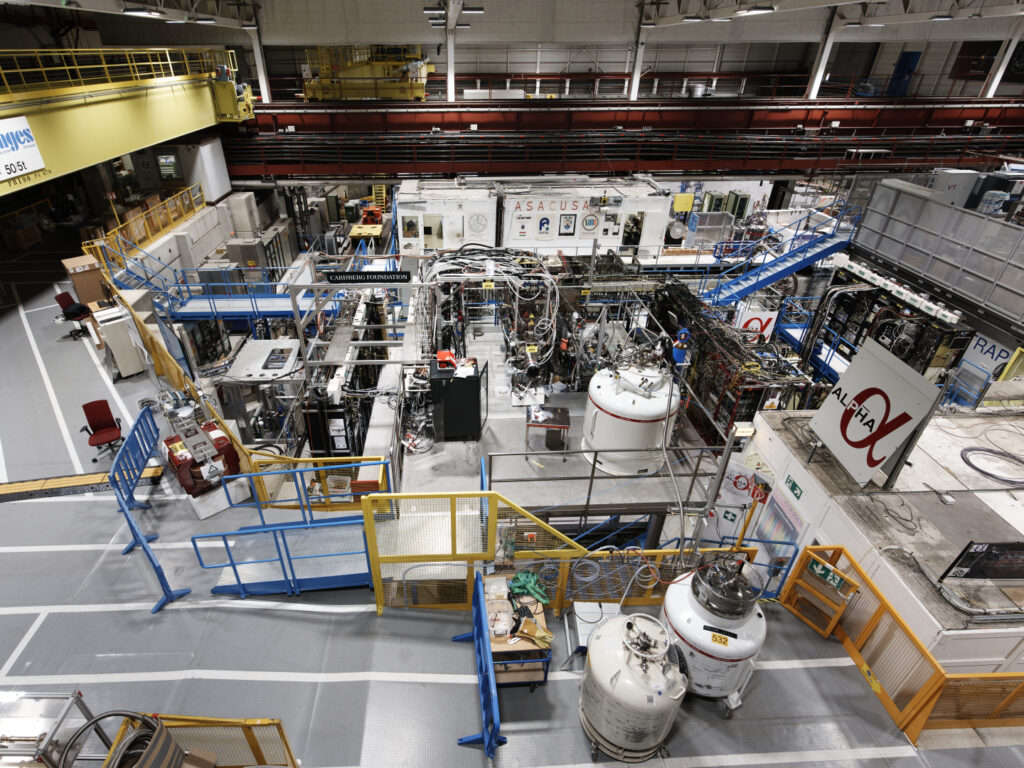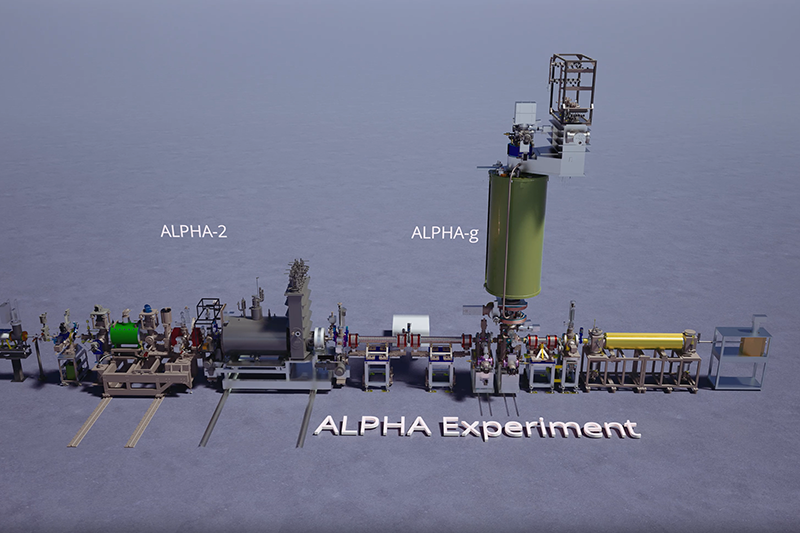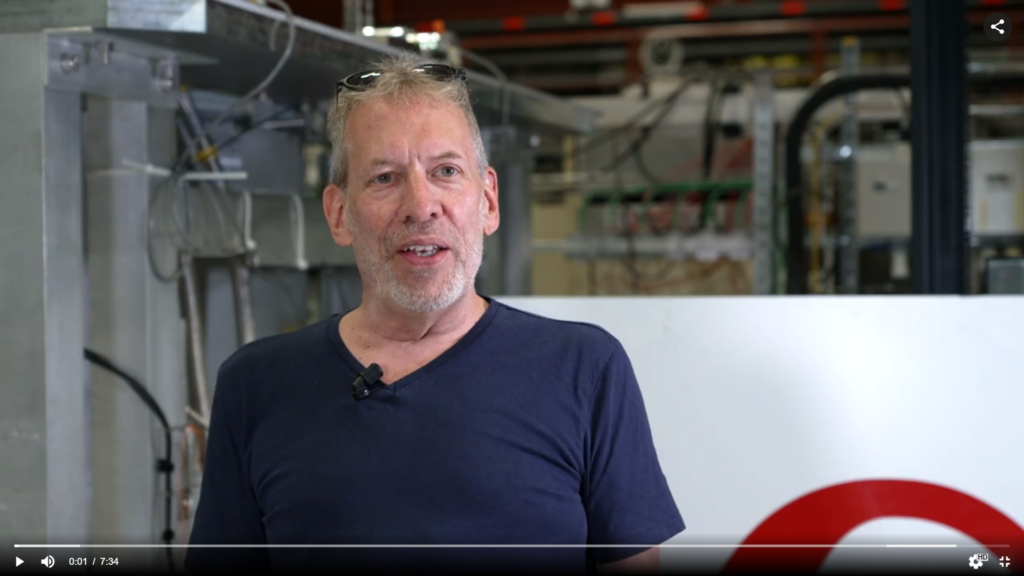In a paper published today in Nature, the ALPHA collaboration at CERN’s Antimatter Factory shows that, within the precision of their experiment, atoms of antihydrogen – a positron orbiting an antiproton – fall to Earth in the same way as their matter equivalents.

Einstein’s general theory of relativity described the effects of gravity in 1915 and has passed many experimental tests since then. A component of the theory called the weak equivalence principle states that all objects, regardless of their mass or composition, should experience exactly the same gravitational acceleration. Although the prevailing view is that antimatter should behave in the same way as matter in response to Earth’s gravitational pull, it has been extremely difficult to test whether this is true because antimatter annihilates whenever it meets its opposite particle.
The ALPHA collaboration creates antihydrogen atoms by taking negatively charged antiprotons, produced and slowed down in the Antimatter Factory’s AD and ELENA machines, and binding them with positively charged positrons accumulated from a sodium-22 source.
In 2018 the ALPHA collaboration from CERN constructed the ALPHA-g machine, a magnetic trap for antihydrogen atoms, designed to study the effects of gravitation. It confines the neutral – but slightly magnetic – antimatter atoms, which prevents them from coming into contact with matter and annihilating.

This machine makes it possible to measure the vertical positions at which the antihydrogen atoms annihilate with matter once the trap’s magnetic field is switched off, allowing the atoms to escape. In their investigations the ALPHA researchers slowly released antihydrogen atoms suspended within the ALPHA-g machine and tracked their subsequent motion. If more spill out of the bottom than the top it is likely that antimatter atoms behave in the same way as regular matter. With this experiment, Jeffrey Hangst and colleagues observed a tendency for magnetically trapped antihydrogen atoms released into ALPHA-g to fall from the bottom of the apparatus.

The ALPHA-g experiment is the culmination of efforts over the past decade to expand the palette of antimatter experiments conducted by the ALPHA Collaboration. The Cockcroft Institute (CI) has been critical in providing support and leadership for this experiment. William Bertsche, member of the Cockcroft Institute and Deputy Spokesperson for ALPHA, led the development and operation of the ALPHA-g experiment. Two devices in the experiment, the upgraded ALPHA antiproton catching trap, and the ALPHA-g beamline, were realised through collaboration with CI and ASTeC scientists based at Daresbury laboratory, and greatly benefited from the contributions of excellent students trained in its education programme.
Mark Johnson, a former CI student, who now works as an accelerator scientist at Daresbury, states: “To produce the antihydrogen used in this study, we first needed to transfer positrons and antiprotons into the ALPHA-g machine along a specially designed beamline. This was particularly challenging, since both types of particles had to be transported using one set of magnets, and at very low energies.
During my PhD with the Cockcroft Institute, we developed this beamline from early simulations through to its successful operation at CERN. It’s brilliant to know that this work has contributed to the exciting measurement reported today.”
These findings confirm the prevailing view that antimatter should feel the effects of gravity the same way as for ordinary matter, in agreement with the predictions of general relativity. The work paves the way for future tests of the weak equivalence principle, which may improve our understanding of the gravitational nature of antimatter, the authors conclude.
Full article:
Anderson, E.K., Baker, C.J., Bertsche, W. et al. Observation of the effect of gravity on the motion of antimatter. Nature 621, 716–722 (2023). https://doi.org/10.1038/s41586-023-06527-1
Further information:
https://home.cern/news/news/physics/alpha-experiment-cern-observes-influence-gravity-antimatter
https://www.nature.com/articles/d41586-023-03043-0
Video news release:
